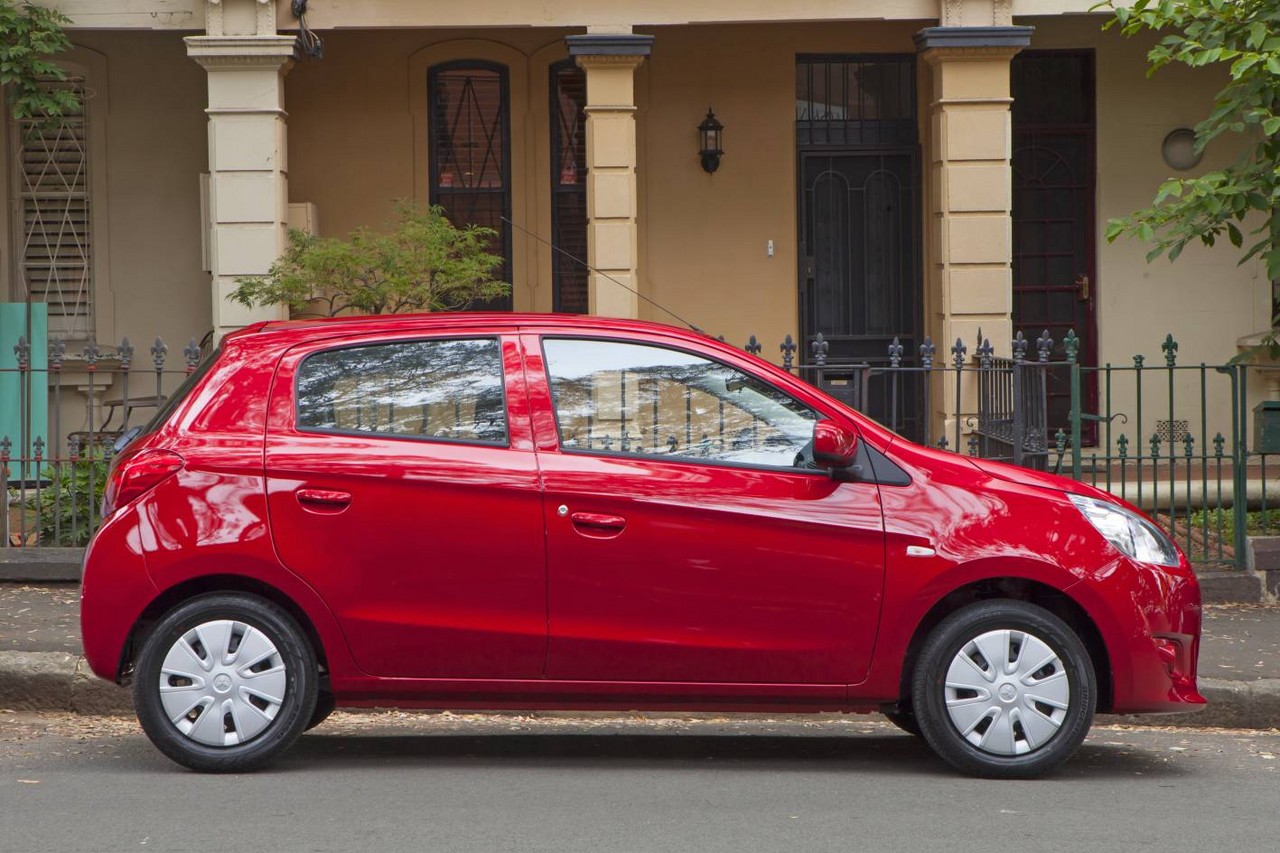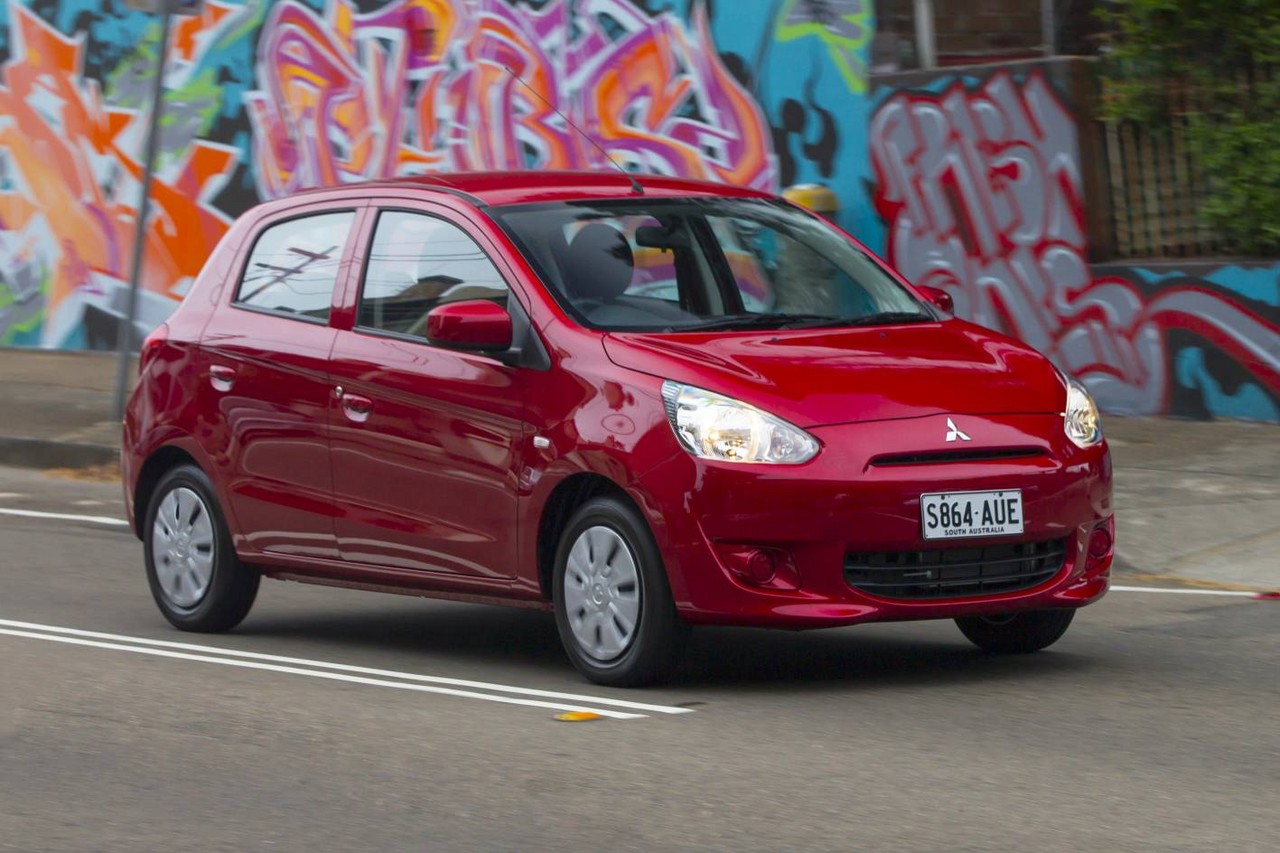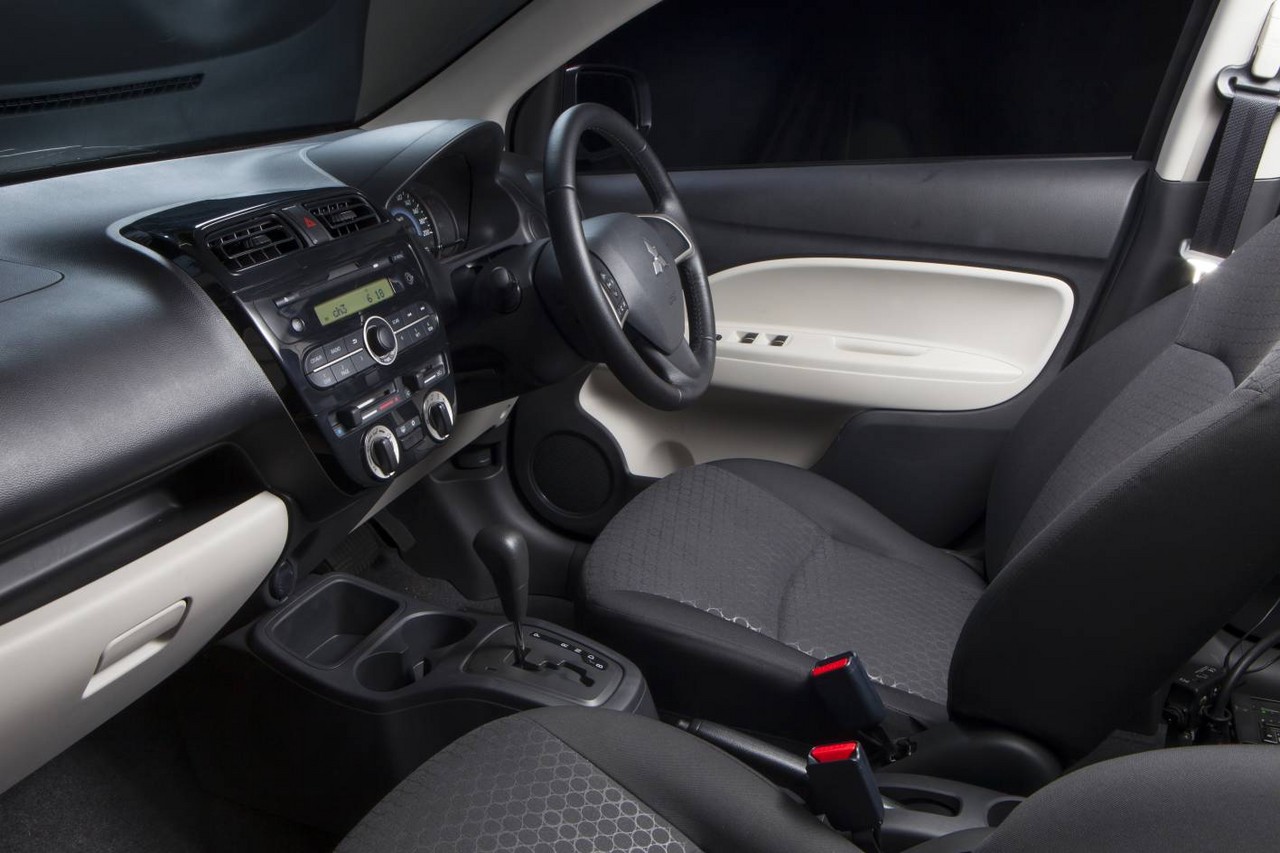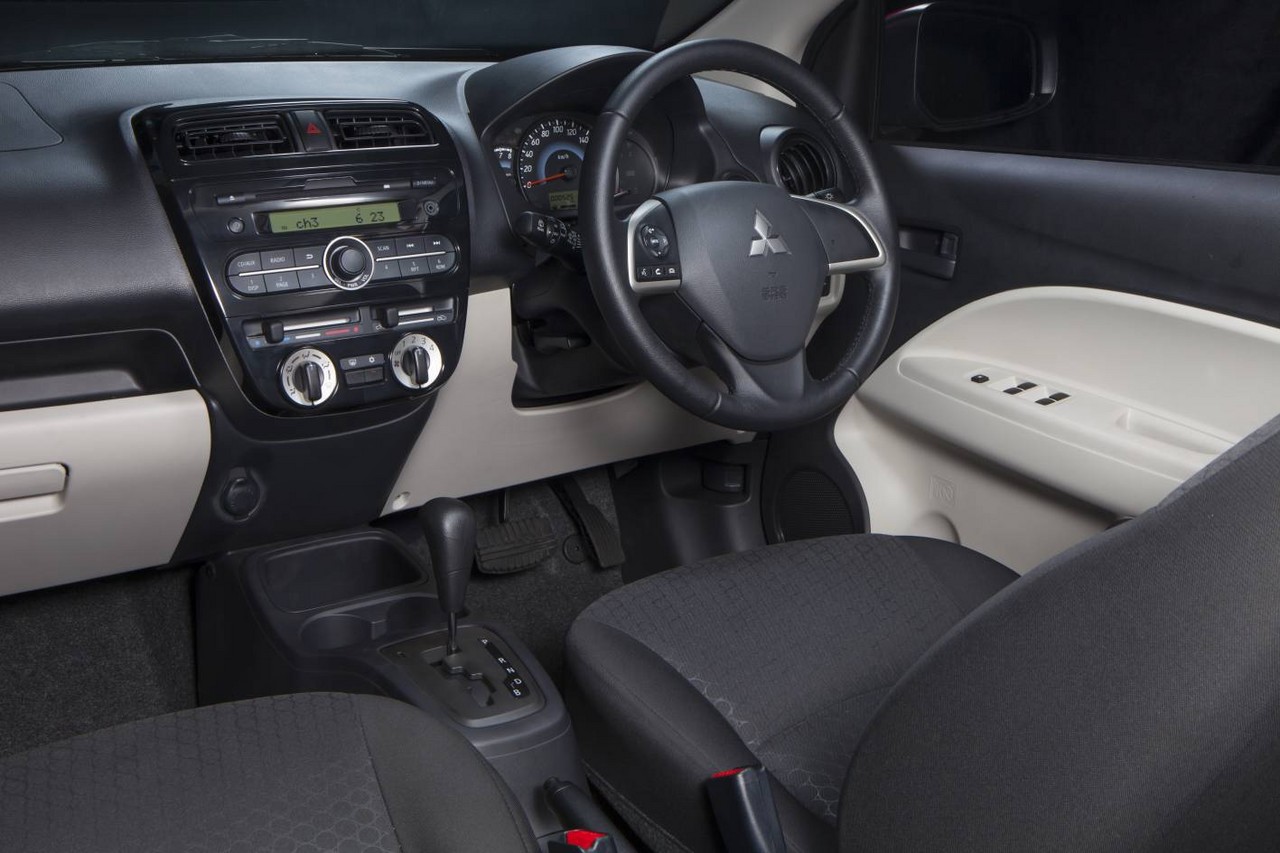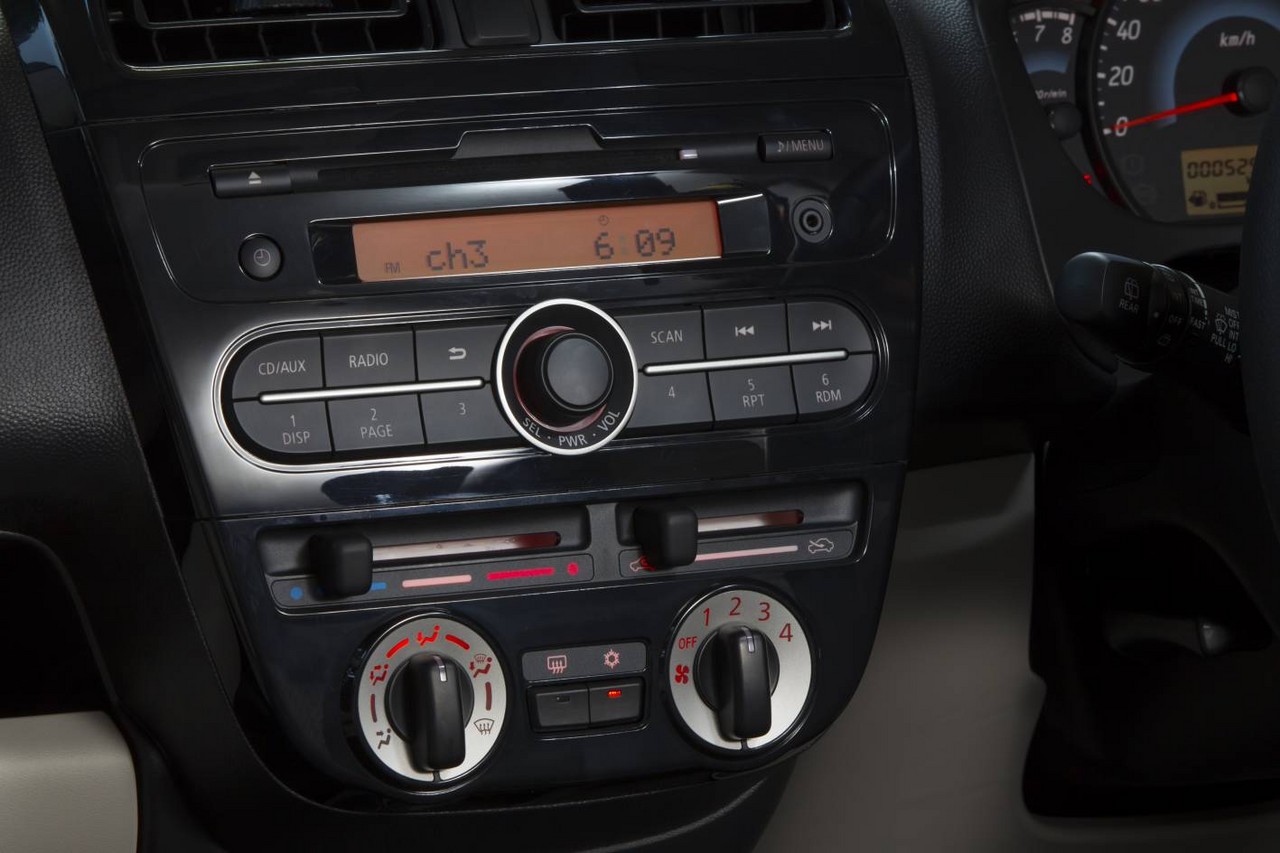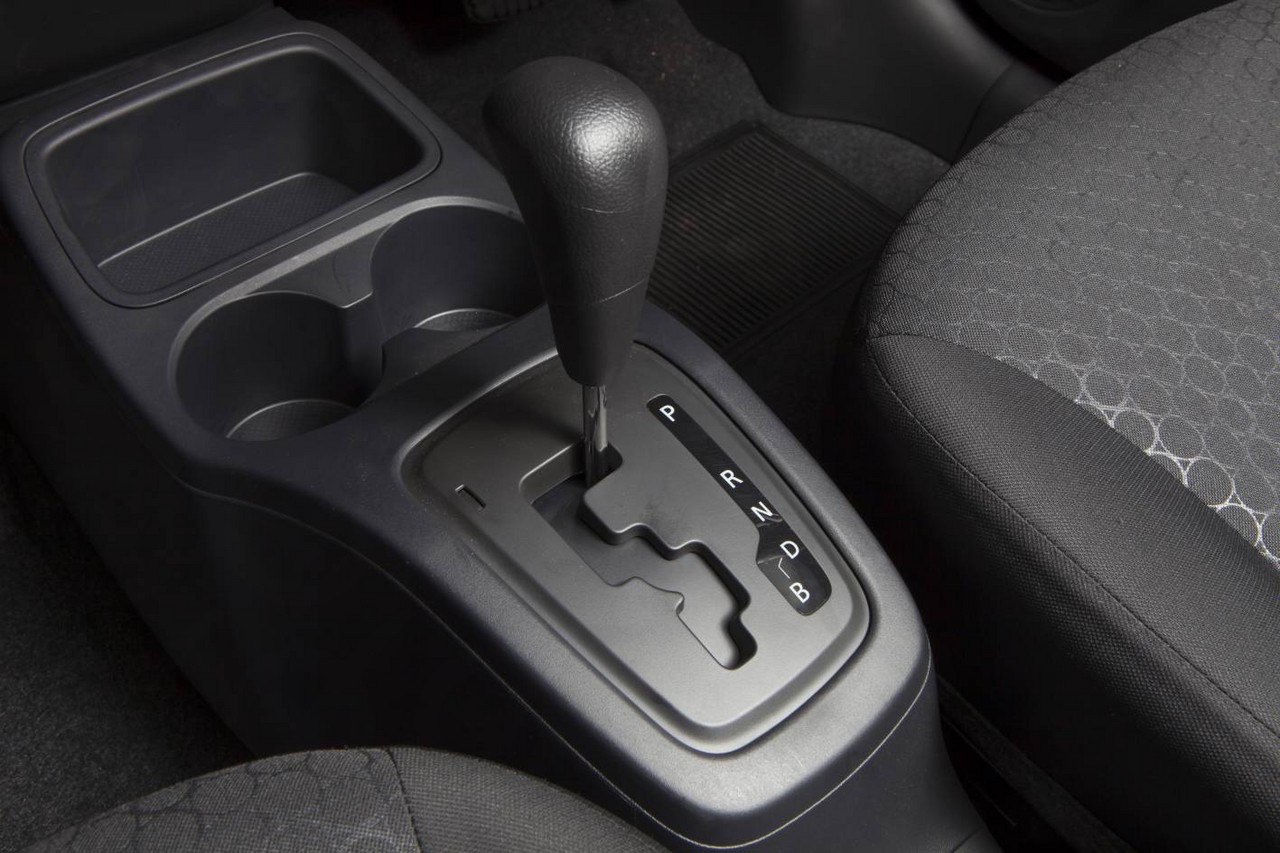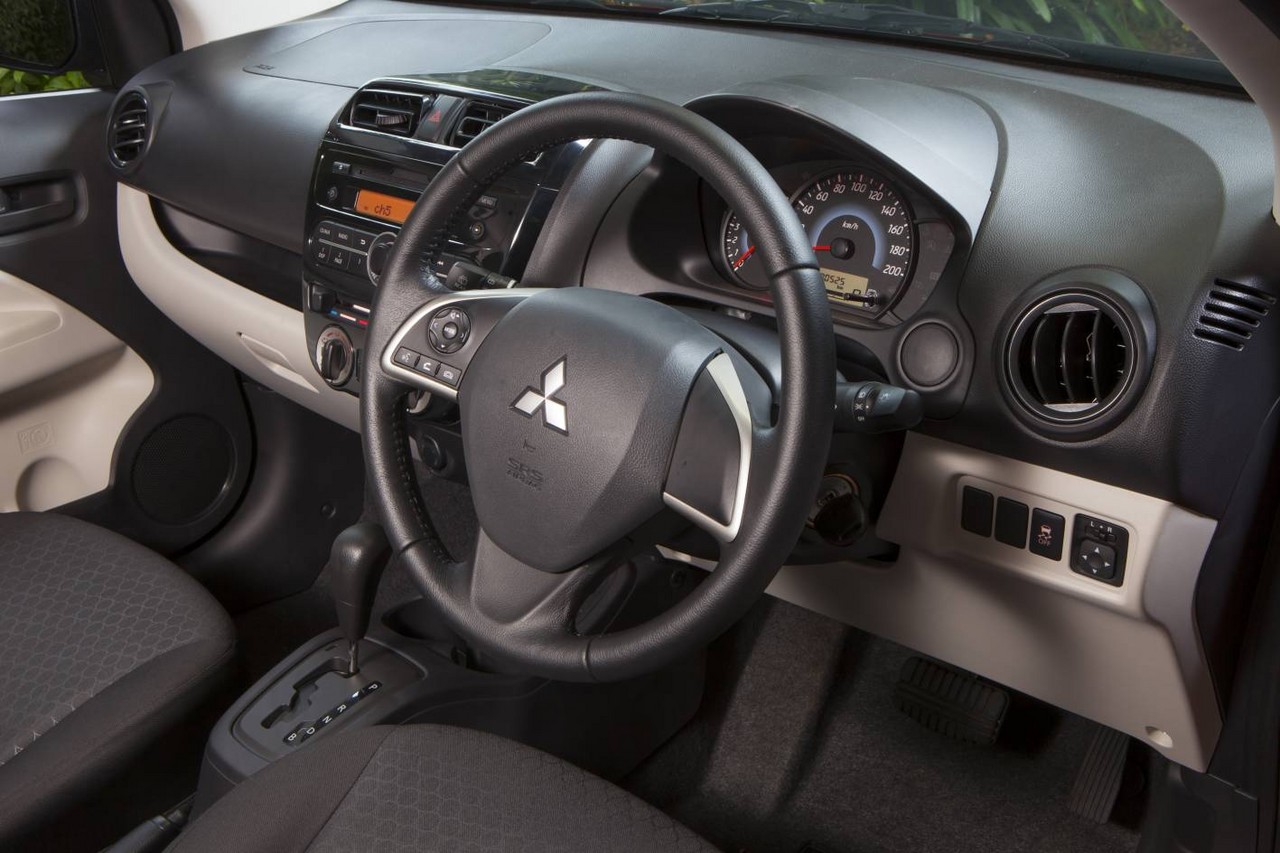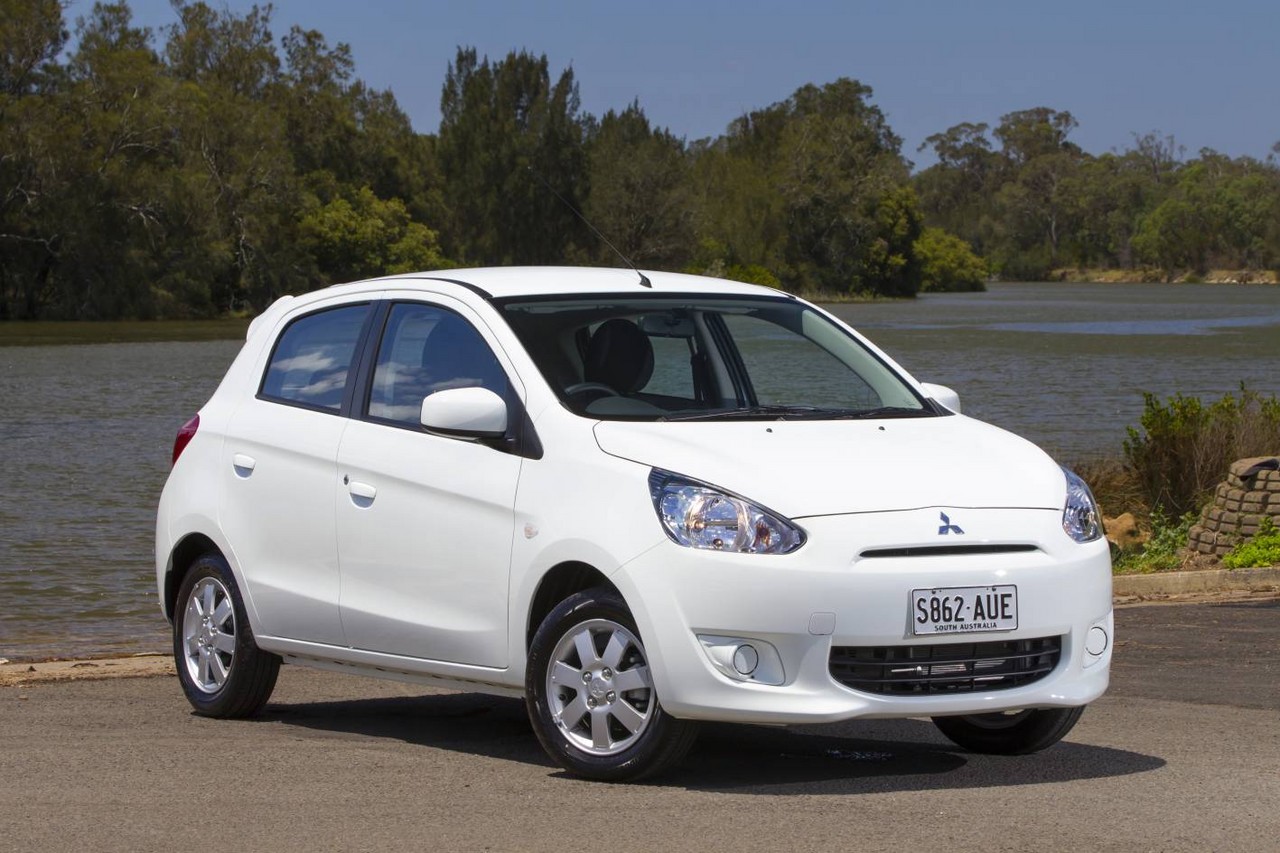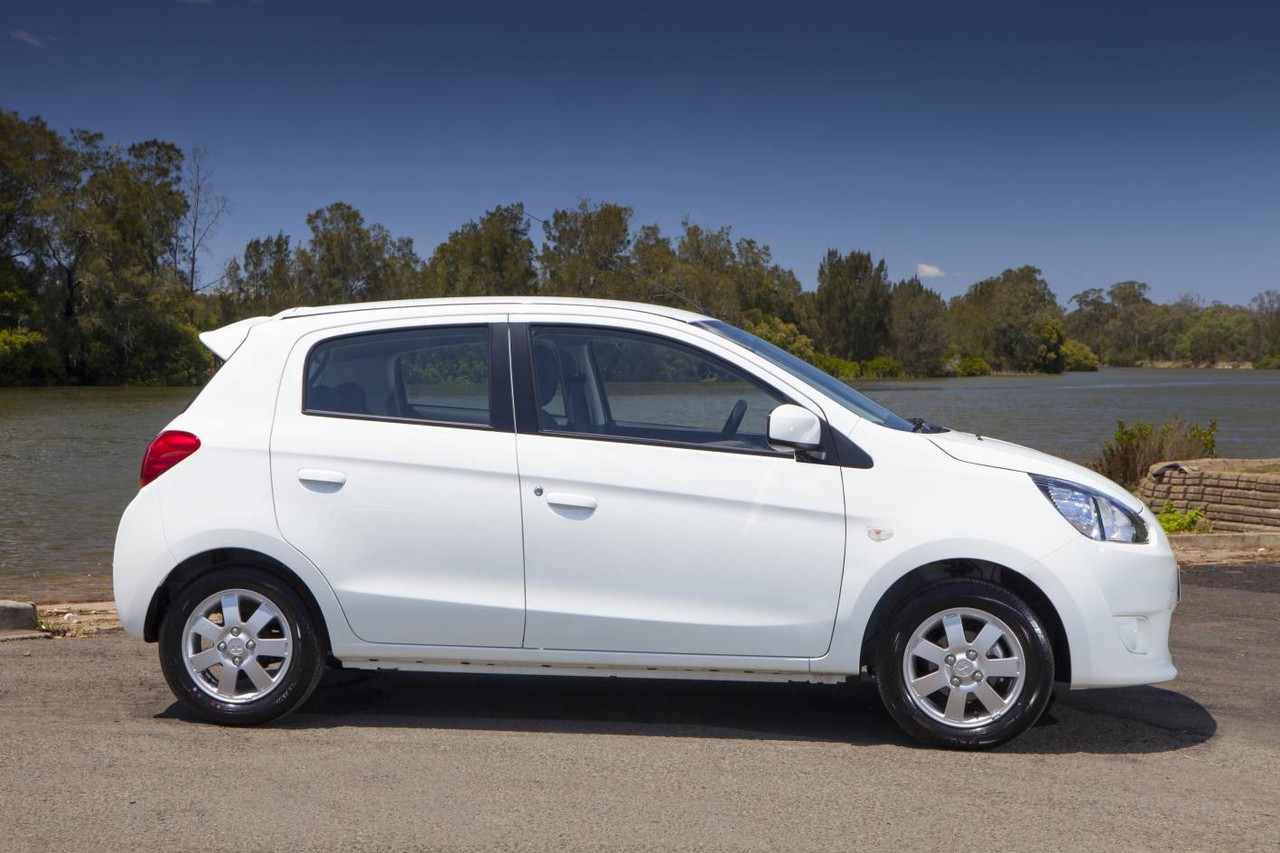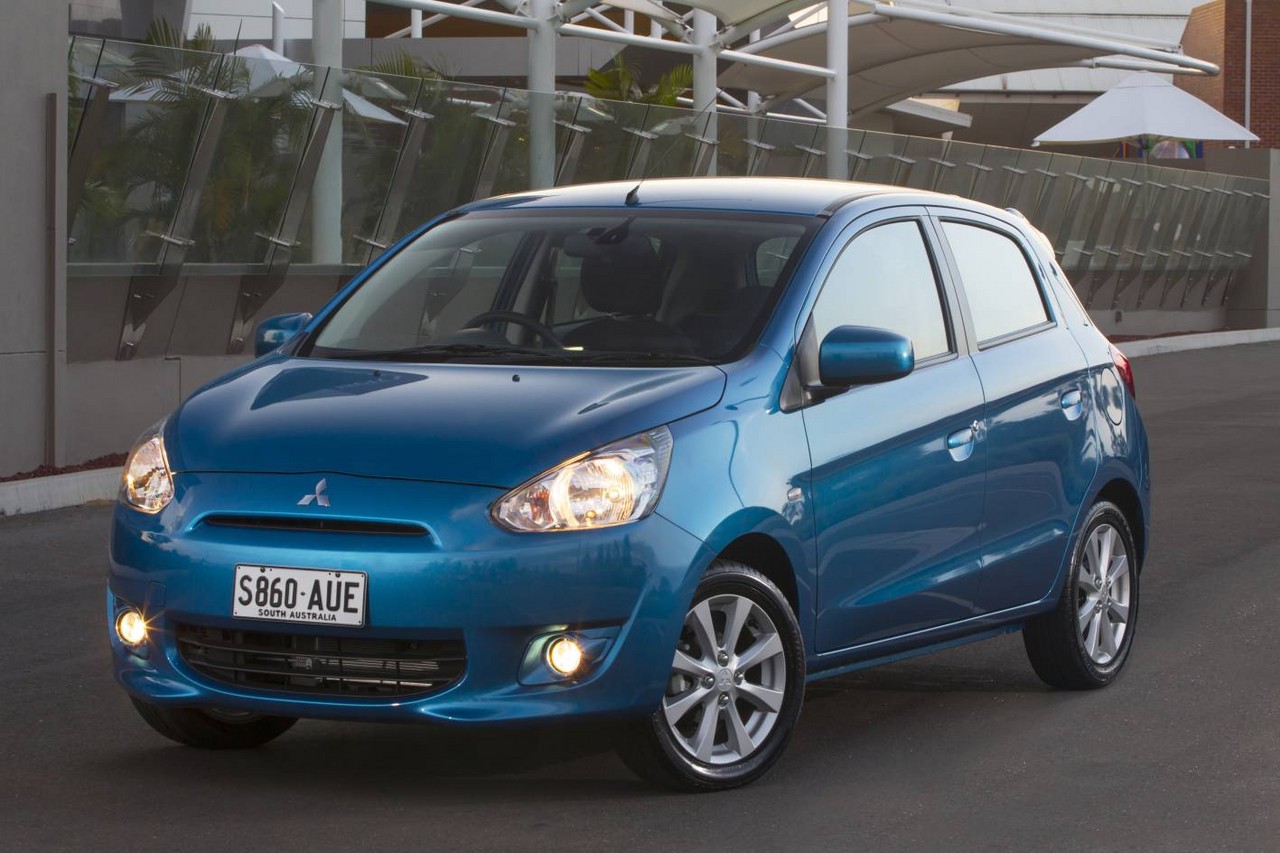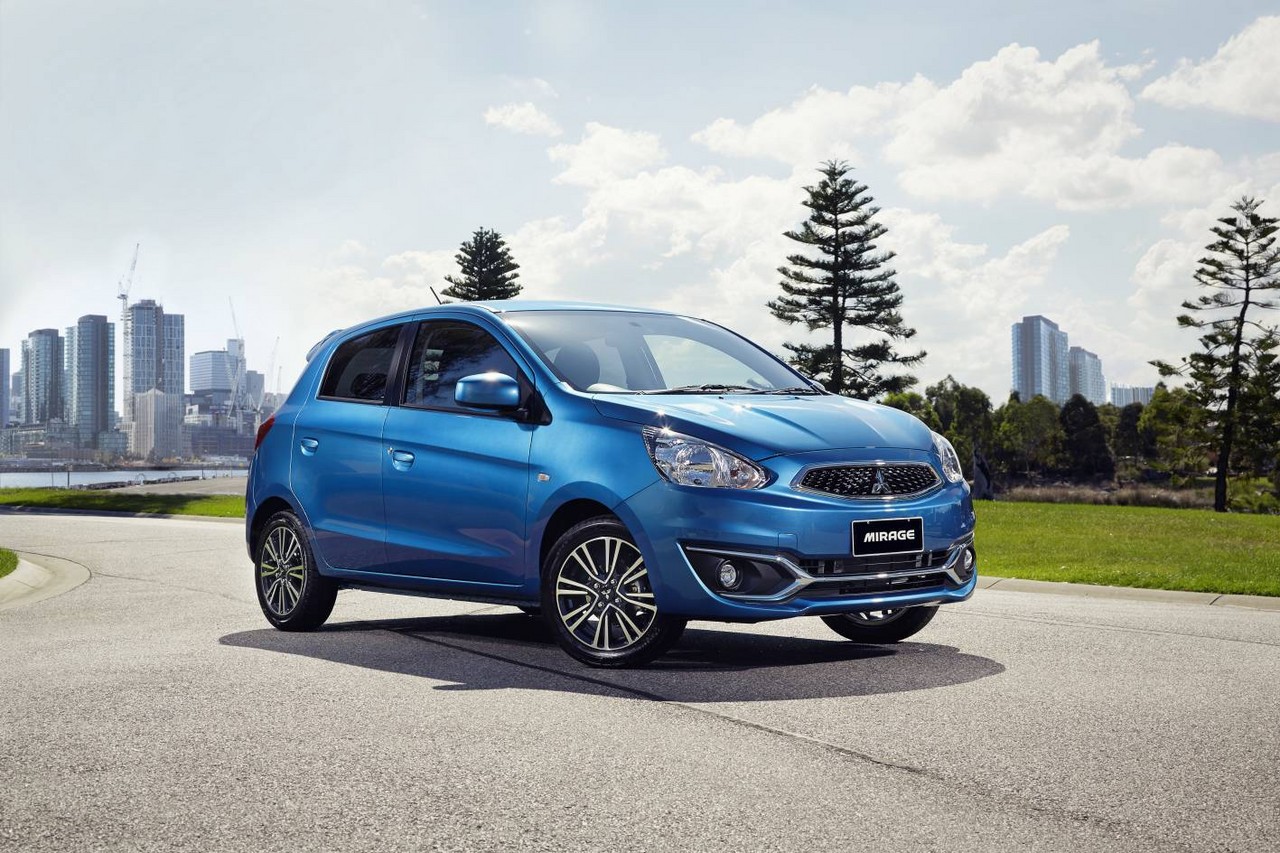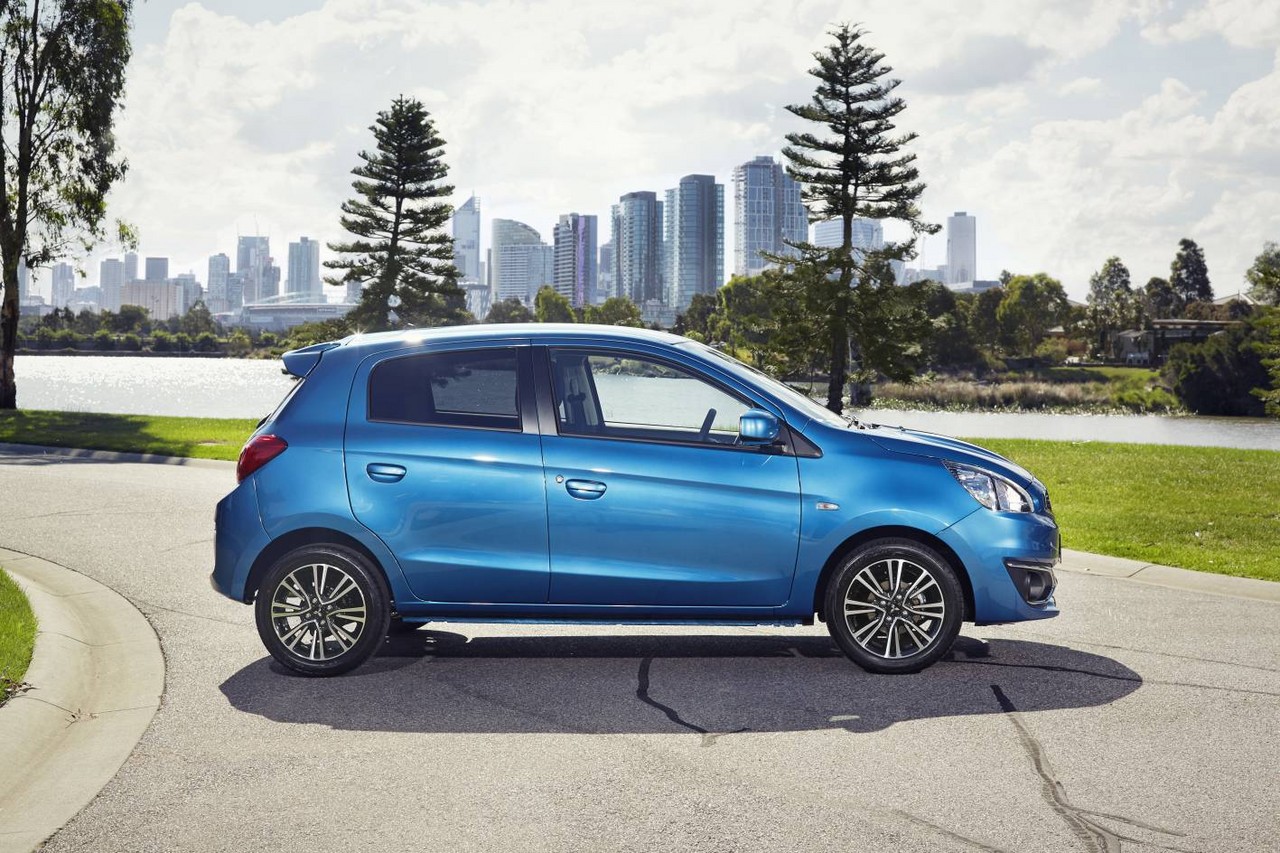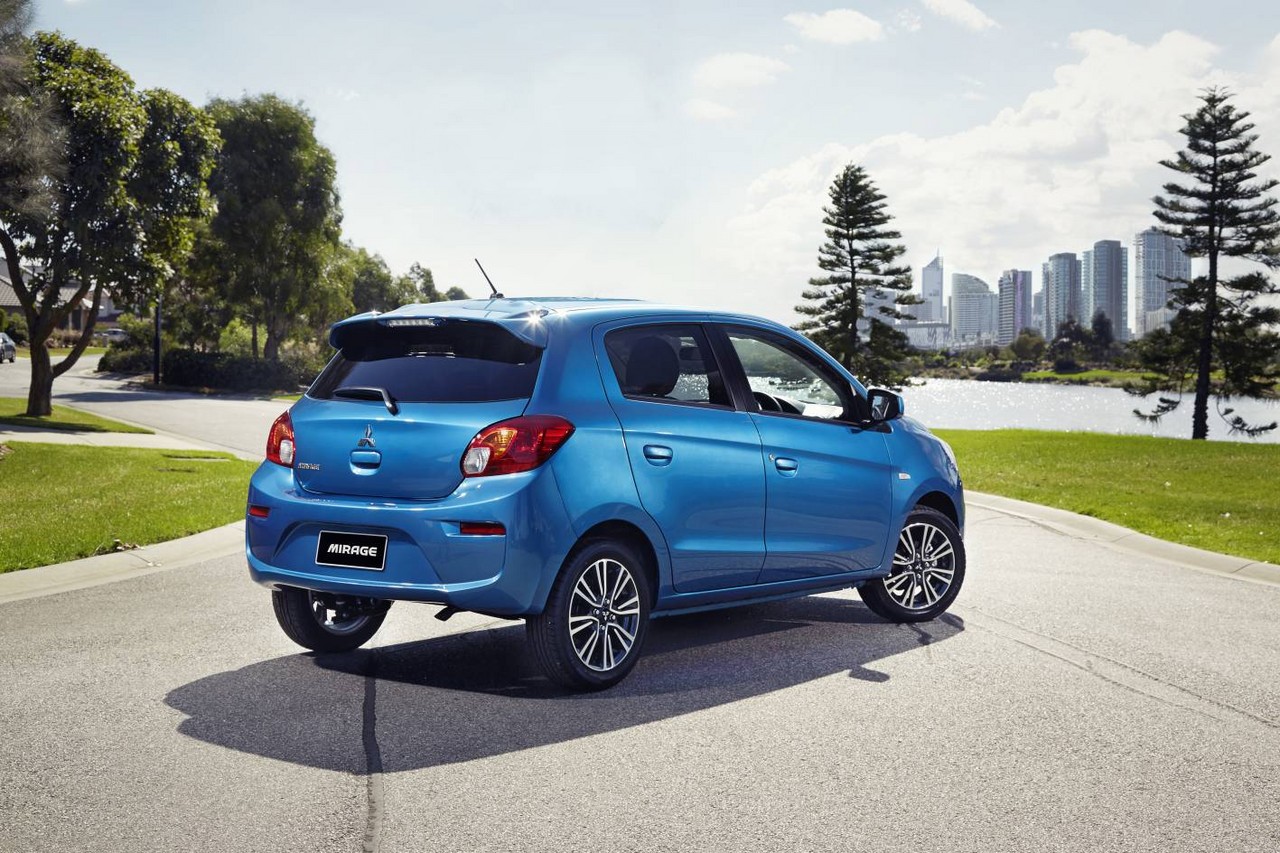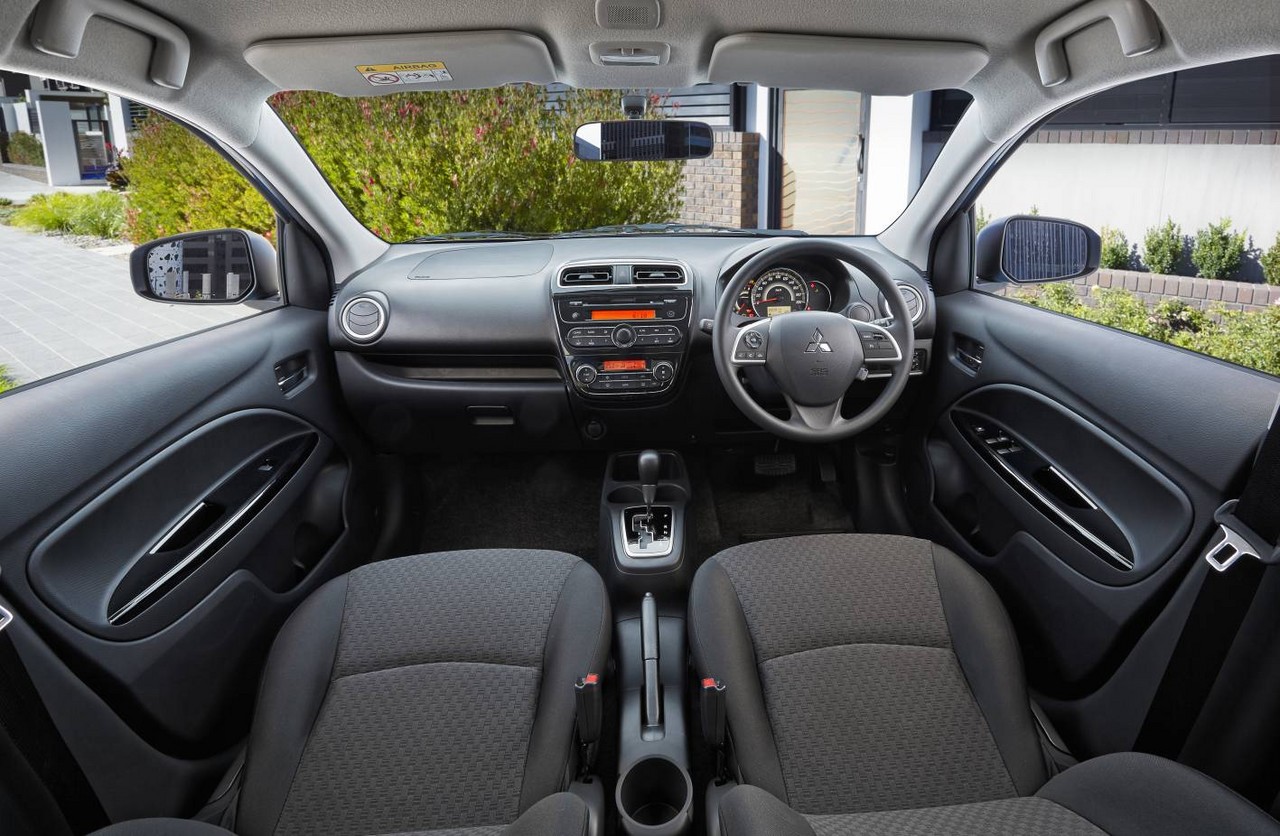
- Fuel-efficient 1.2-litre petrol engine
- Supportive front seats
- Small turning circle
- Generally comfortable ride
- Affordable retail pricing
- Slow-ratio steering is light but lacks feel
- Cabin lacks sound insulation
- Cheap interior materials
- Steering wheel doesn’t adjust for reach
- Cramped rear seats
Review: Mitsubishi LA.I Mirage hatch (2013-16)
Overview
Released in January 2013, the Mitsubishi LA Series I (LA.I) Mirage was initially available as a five-door hatchback – the LA Mirage sedan has been reviewed separately. Manufactured in Chonburi, Thailand, the front-wheel drive Mirage was powered by a 1.2-litre three-cylinder petrol engine that was available with either a five-speed manual or continuously variable transmission (CVT). The Mirage hatchback range initially consisted of ES, Sport and LS variants, though the Sport was discontinued in September 2014.
RA92 engine
The 1.2-litre RA92 three-cylinder engine had an aluminium alloy cylinder block and head, double overhead camshafts, four valves per cylinder, Mitsubishi’s MIVEC variable valve timing system and a compression ratio of 10.5:1. Furthermore, the regular unleaded (90 RON) petrol was recommended.
| Engine | Variant | Trans. | Years | Peak power | Peak torque |
|---|---|---|---|---|---|
| 1.2-litre petrol I3 | ES, | 5sp man., CVT |
2013-16 | 57 kW at 6000 rpm | 100 Nm at 4000 rpm |
| Sport | 5sp man., CVT |
2013-14 | 57 kW at 6000 rpm | 100 Nm at 4000 rpm | |
| LS | 5sp man., CVT |
2013-16 | 57 kW at 6000 rpm | 100 Nm at 4000 rpm |
Dimensions, steering and suspension
Compared to the Mitsubishi RG Colt which it effectively replaced, the LA Mirage hatchback was 175 mm shorter (at 3710 mm), 15 mm narrower (1665 mm), 50 mm lower (1500 mm) and has a 50 mm shorter wheelbase (2450 mm), while its drag coefficient was 0.30 Cd.
The Mirage had electric power-assisted steering, MacPherson strut front suspension and a torsion beam rear axle.
September 2014 update
From September 2014, the LA Mirage hatchback had an upgraded NVH (Noise, Vibration and Harshness) package which included:
- Additional sound insulation in the front and rear floor areas, A-pillars, dashboard panel and front cowl top;
- New engine mounts with hydraulic insulators and cast aluminium brackets;
- New transmission mounts; and,
- A quieter engine due to ‘newly developed loss reduction technology’.
The post-September 2014 Mirage was also fitted with a short antenna.
Safety equipment
Standard safety equipment for the Mirage included dual front airbags, front side airbags, full-length curtain airbags, ABS, electronic brake force distribution, electronic stability control, traction control and front seatbelts with pretensioners and load limiters.
From September 2014, the LA Mirage had an Emergency Stop Signal (ESS) function whereby the brake lights would flash rapidly during emergency braking situations
Euro NCAP and ANCAP crash testing
In Euro NCAP crash testing , the Mirage received a four star safety rating which included a 90 per cent adult occupant protection rating and a 72 per cent child occupant protection rating. In ANCAP crash testing , however, the Mirage received a five star adult occupant protection rating with a score of 34.07 out of 37. In the offset crash test, there was a slight risk of serious chest injury for the front occupants and a slight risk of serious leg injury for the driver. In the side impact and pole tests, however, maximum points were awarded.
While the Mirage performed similarly in both Euro NCAP and ANCAP testing, the disparity in ratings was primarily due to the different weighting of the side impact and pole tests.
Features: Mirage hatch
Standard features for the entry-level Mirage ES hatch included 14-inch steel wheels with 165/65 R14 tyres, a two speaker sound system with a CD player, auxiliary inputs (3.5 mm/USB) and Bluetooth connectivity with audio streaming, air conditioning, a three-spoke leather-wrapped steering wheel, 60/40 split and folding rear seats, remote central locking, power mirrors and windows, a height adjustable driver’s seat, 12 volt power outlet, trip computer and an immobiliser.
The Mirage Sport was further equipped with 14-inch alloy wheels and a four speaker sound system. Both the Mirage ES and Sport variants had plain black seat fabrics (embossed with a polka-dot pattern) and two-tone black/ivory dash and door trims.
The Mirage LS was distinguished by its 15-inch alloy wheels with 175/55 R15 tyres, climate control air conditioning, front fog lights, automatic headlights, rain-sensing wipers, a proximity key and push-button start. Inside, the Mirage LS had ‘waffle-weave’ seat fabric in black and purple, chrome door handles and silver accents for the shifter panel, gear knob and air conditioning vents. Visual cues for the Mirage Sport (and LS) included a roof spoiler and blacked-out door sashes.
September 2014 update
From September 2014, the Mirage had new black interior trim; the Mirage LS was further equipped with cruise control and rear privacy glass.
2013 Mirage LS Plus Pack
In July 2013, the four hundred (400) LS variants were released with a limited edition Plus Pack. Compared to the standard LS variants, the LS Plus Pack models were distinguished by their ‘Pop Green’ paint finishes, front air dam, chrome front bumper garnish, chrome fog lamp garnish and chrome tailgate protector.
Brochure
Related links
- Mitsubishi News: Mitsubishi All-New Mirage (February 2013)
- Mitsubishi News: Pop Goes The Mirage (July 2013)
Review: Mitsubishi LA.II Mirage hatch (2016-on)
Overview
Released in Australia in March 2016, the Mitsubishi LA Series II (LA.II) Mirage hatch introduced a revised range as the Mirage LS was solely available with a continuously variable transmission (CVT).
The Mitsubishi LA.II Mirage hatch could be identified by its new front grille with chrome accents, redesigned bonnet, bumpers and wheel designs. Inside, there was new black seat trim, cushioned rear seats, a chrome accent for the audio panel and, for the Mirage LS, piano black accents for the gear shift and window switch panels.
As part of the LA.II Mirage hatch update:
- A new electric power steering calibration was introduced for ‘more intuitive steering response’;
- The continuously variable transmission (CVT) was recalibrated for improved rolling acceleration; and,
- The springs and dampers re-tuned to reduce body roll, while new front suspension top mounts were introduced to improve ride comfort and reduce road noise.
| Engine | Variant | Trans. | Peak power | Peak torque |
|---|---|---|---|---|
| 1.2-litre petrol I3 | ES, | 5sp man., CVT |
57 kW at 6000 rpm | 100 Nm at 4000 rpm |
| LS | CVT | 57 kW at 6000 rpm | 100 Nm at 4000 rpm |
Features
For the Mitsubishi LA.II Mirage hatch, standard features were extended to include Hill Start Assist (not previously available on the Mirage ES with manual transmission). Furthermore, the Mirage LS gained an ambient temperature display, illuminated gear shift panel and high contrast instrument meter with white back lighting.
Related links

